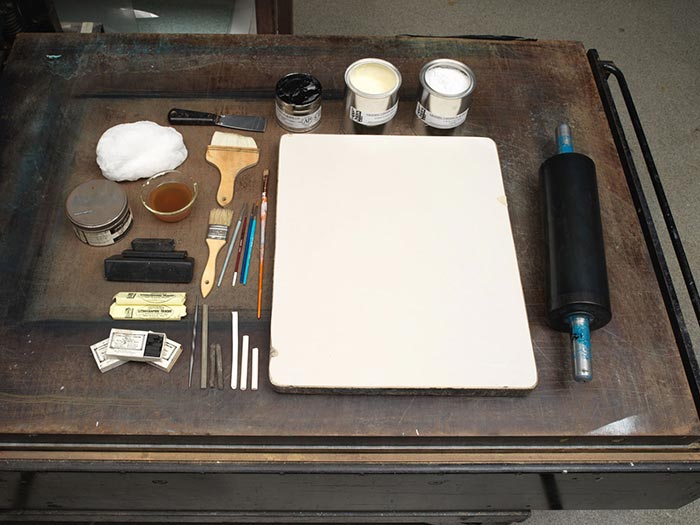The Darktown Fire Brigade -- Slightly Demoralized: "I knowed we'd make em take water!"
Publisher Currier & Ives American
Not on view
The late nineteenth-century Darktown prints by Currier & Ives depict racist stereotypes that are offensive and disturbing. The Metropolitan
Museum of Art preserves such works to shed light on their historical context and to enable the study and evaluation of racism.
This print, depicting caricatured Black (African American) figures, shows three units of a fire brigade which have collided where three roads converge at a narrow wooden bridge. The firemen in each brigade are differentiated by their red, blue and yellow shirts. Pairs of firemen fight one another amid the wreckage on the shore, on the bridge, and in the water. In the center, a donkey sits upright next to the coiled waterhose wagon which has overturned and lost a wheel. Men fight on the road at left, while on the road at right, a man, wearing a torn red shirt and holding a voice trumpet, stands gesticulating atop the overturned pump wagon. He is unaware that a fire chief (wearing a yellow shirt and with his fire helmet on the ground between his legs) is standing nearby with a flaming scroll of paper; this firechief is about to set fire to the hem of the man's red shirt. In the river (lower left foreground), another firechief (wearing a red shirt and fire helmet) swings his ceremonial staff to hit the patched, trousered bottom of a blue-shirted fireman clambering onto the bridge. Other men are dazed or fighting in the water, while at the lower right, a white horse is submerged up to its neck in water; the broken ladder wagon is on the shore nearby. At the lower right corner, another wet fireman stands on a ladder propped up in the water; he has placed his right hand on his head as he stares with amazement at the commotion. The title and caption are inprinted in the bottom margin. [For the companion print, see accession number 52.632.38.]
Nathaniel Currier (1813–1888), whose successful New York-based lithography firm began in 1835, produced thousands of prints in various sizes that together create a vivid panorama of mid-to-late nineteenth century American life and its history. People eagerly acquired such lithographs featuring picturesque scenery, rural and city views, ships, railroads, portraits, hunting and fishing scenes, domestic life and numerous other subjects, as an inexpensive way to decorate their homes or business establishments. As the firm expanded, Nathaniel included his younger brother Charles in the business. In 1857, James Merritt Ives (1824–1895), the firm's accountant since 1852 and Charles's brother-in-law, was made a business partner. Subsequently renamed Currier & Ives, the firm continued via their successors until 1907.

